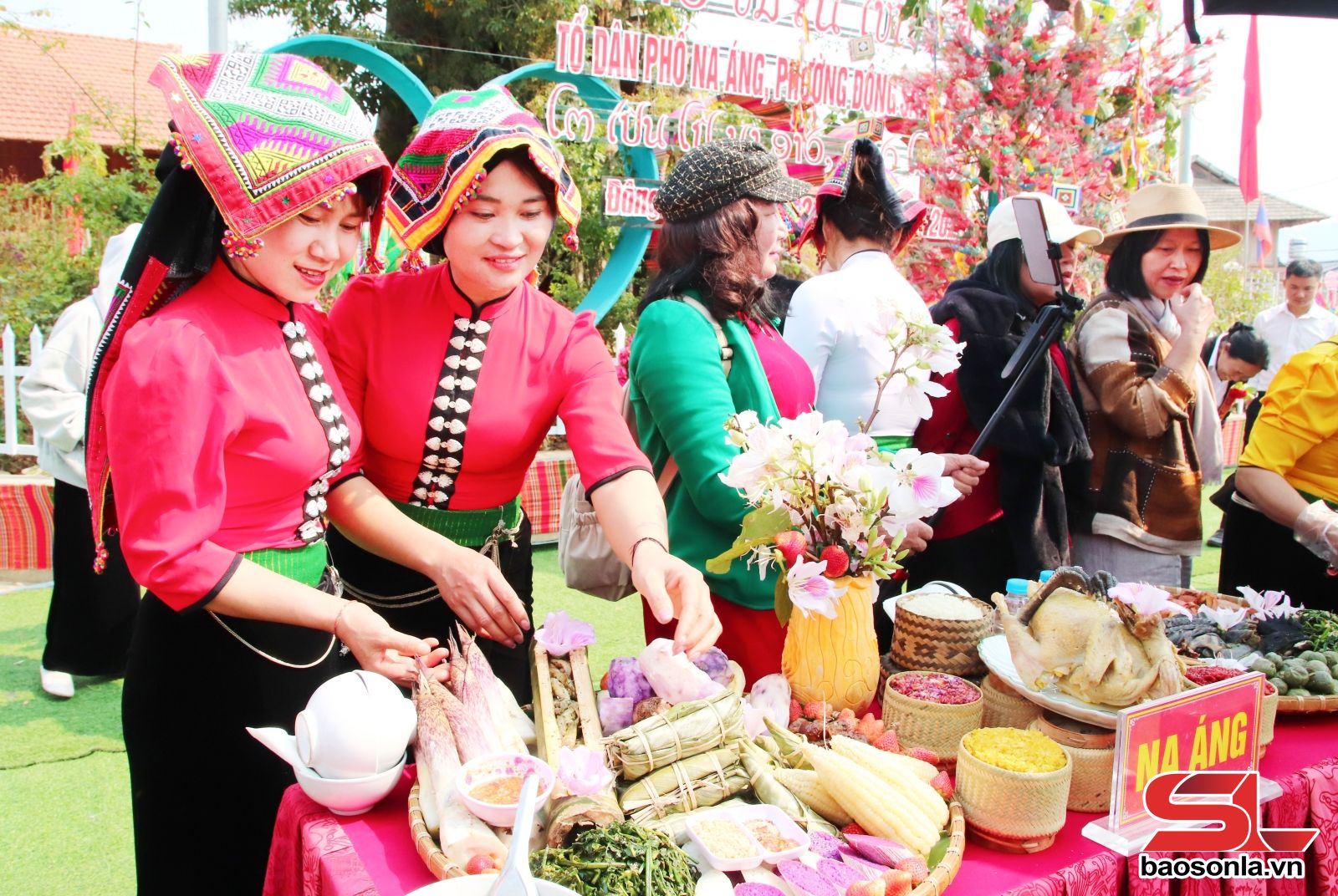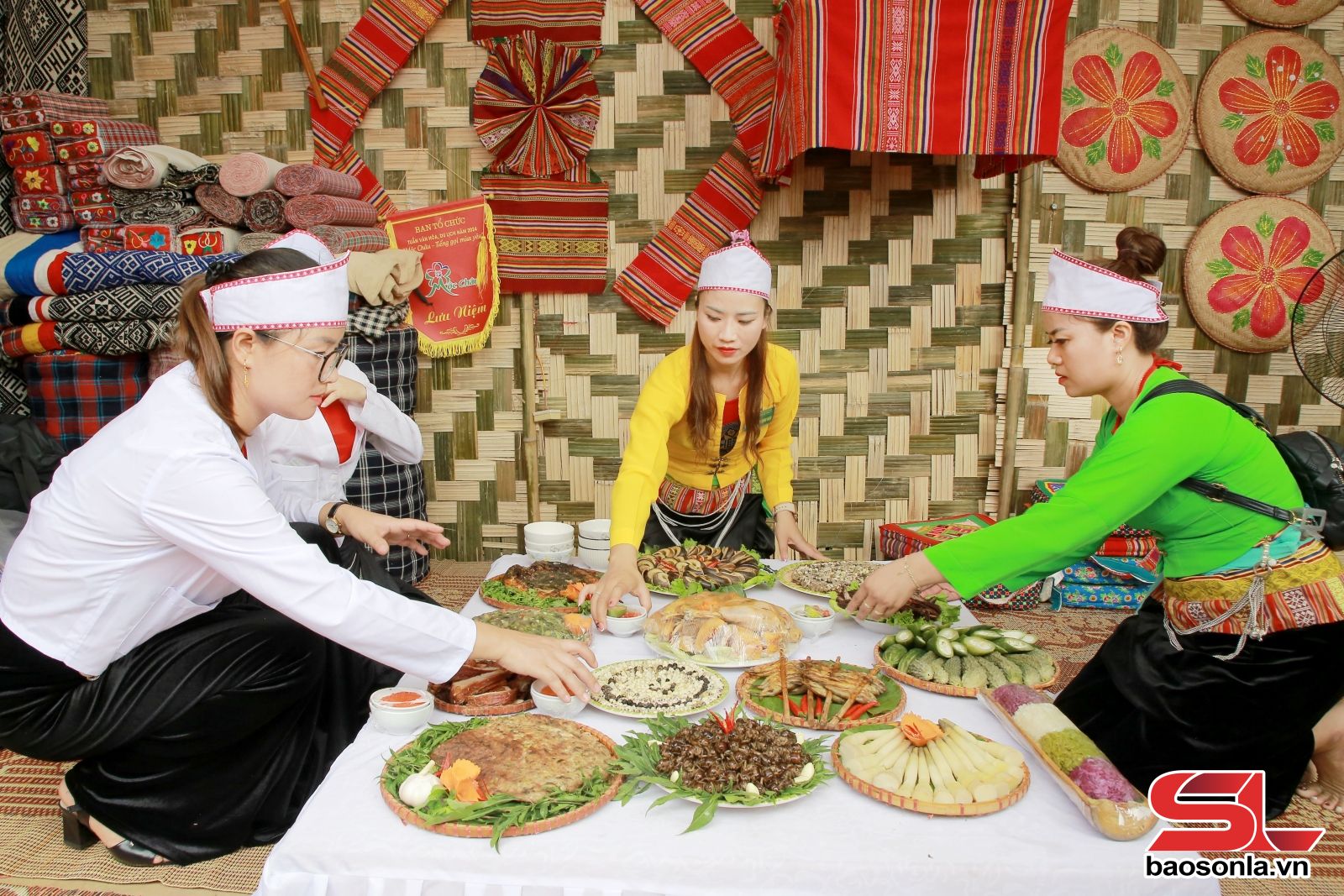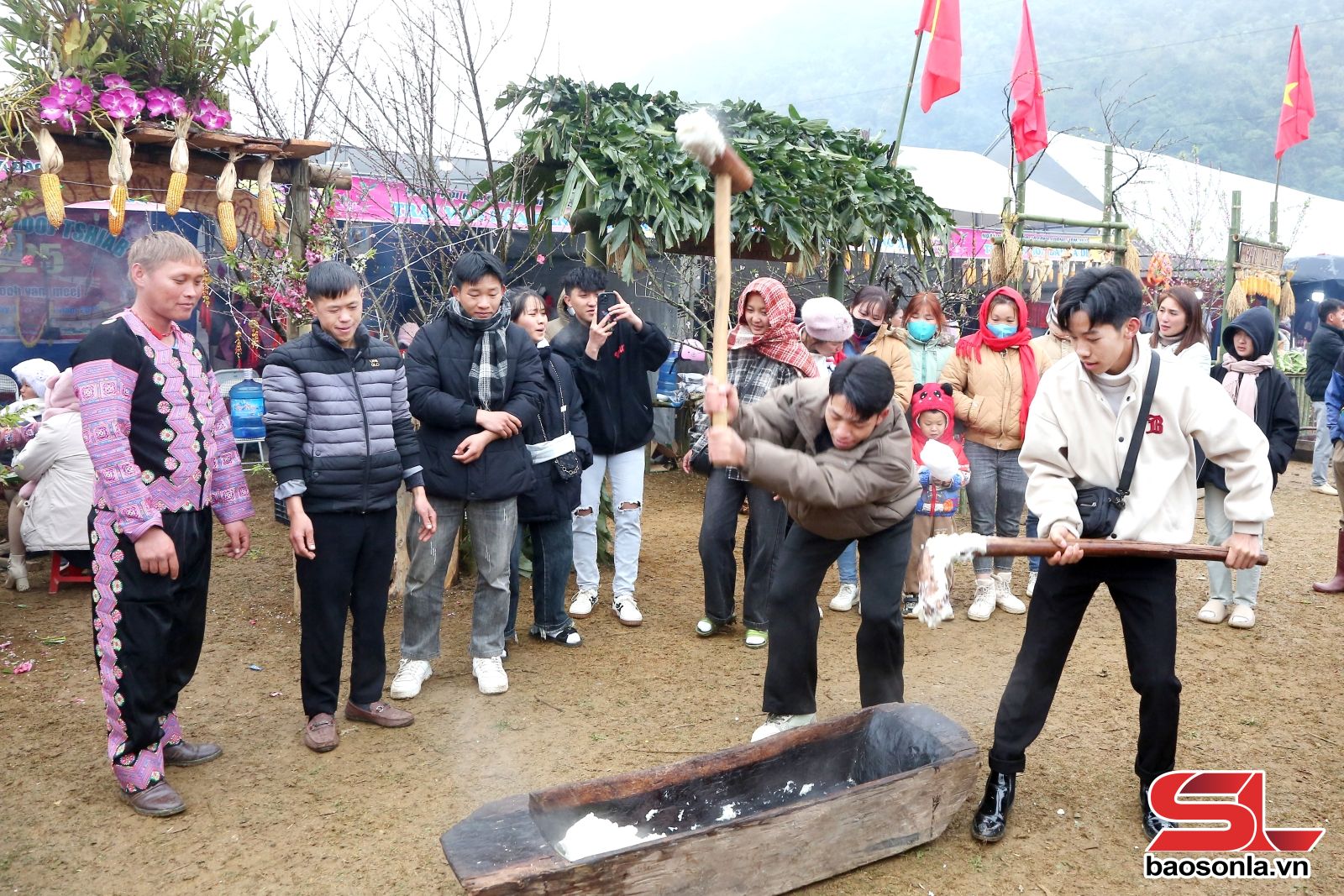
Son La, home to 12 long-established ethnic groups, boasts a vibrant culinary landscape shaped by each group's distinctive dishes and preparation methods. This rich tapestry of flavours includes signature offerings such as banh day (round glutinous rice cake) and thang co (a traditional stew) from the Mong people; smoked buffalo meat, grilled stream fish, com lam (bamboo-cooked rice), five-coloured sticky rice, forest vegetables, and canh bon (a local soup) from the Thai and Muong communities; and fermented pork and traditional wine from the Dao people. What truly sets these dishes apart is the use of natural ingredients combined with bold, native spices like mac khen, hat doi, and the iconic dipping sauce cham cheo.
When travelers visit a destination, beyond exploring its natural beauty and learning about its history, they often seek out local specialties and signature dishes. Through a flavourful meal, visitors gain a deeper understanding of the region’s unique cultural traditions. It’s this culinary connection that often leaves a lasting impression and keeps them coming back.
Luong Thi Hong Tuoi, head of the community-based tourism group in Vat Hong residential area, Muong Sang ward, Moc Chau township, said: “In community-based tourism, we see food as an essential part of showcasing the unique culture of the local Thai people to visitors.”
“In addition to popular dishes like grilled fish and smoked meat, we also introduce traditional festival and New Year dishes, explaining the cultural meanings behind each one. Here, visitors can try their hand at making com lam (bamboo-cooked rice), grilled fish, or pounding cham cheo dipping sauce.”
She noted that these hands-on experiences leave guests with lasting memories of local cuisine and a deeper appreciation for the land and people of Moc Chau.

An ethnic cuisine competition at the Moc Chau Culture and Tourism Week.
The development, preservation, and promotion of the culinary value has become one of the standout tourism products being implemented by all-level agencies, sectors, and localities in diverse ways.
Tran Xuan Viet, Deputy Director of the provincial Department of Culture, Sports, and Tourism, stressed that if culinary experiences are developed as a tourism product, they can help build a positive image of the people and land of Son La.
“Therefore, we have collaborated with localities and training institutions to organise workshops that enhance knowledge and skills in preparing ethnic dishes, ensuring food safety standards for community-based tourism businesses, restaurants, and hotels.”
“We also encourage and support the creation of culinary-themed tours and experiences, and organise cooking competitions,” he said, adding these initiatives aim to offer visitors a chance to enjoy delicious local dishes, immerse themselves in the ‘local cultural space,’ and authentically experience the cultural identity and traditional values of the locality.

It is clear that for tourists, cuisine not only satisfies nutritional needs during their journey but also provides an opportunity to explore the culture, customs, and aesthetics of locals. The novelty, deliciousness, and appeal of local cuisine at a tourist destination serve as a strong incentive to keep visitors coming back.
Therefore, the development and promotion of culinary services will create a lasting impression, enhance tourism marketing efforts, and attract more visitors to Son La.








(1).jpg)














You have 500/500 characters left
Please enter 5 or more characters!!!